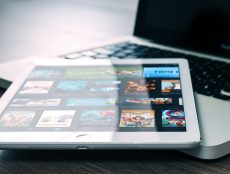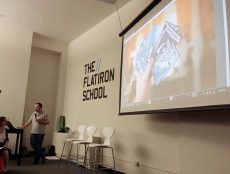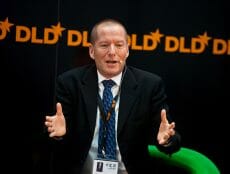
Articles
Editor’s Picks
Babbel Towers In the Global Language Learning Market. But U.S. Brand Recognition Is Still a Challenge.
By Henry Kronk
March 03, 2021
Roughly one year ago, the language learning app Babbel was working to revamp its offerings and features. The company was planning to add games, podcasts, and other multimedia content. It was also building out live class capabilities.
“I remember thinking, ‘Do people really want to get on a Zoom call for a class?’” said CRO Julie Hansen via videoconference. “Well, here we are.”
These capabilities went live in February. And they were extensive. The company not only built an in-app podcast player, it also created a library of podcasts. To stand up the live classes, they added videoconferencing capabilities and began to hire a team of tutors. Babbel Live classes are capped at six learners.
Widely Used and Long-Profitable, Babbel Is Still Making Inroads in the U.S.
Before the launch of these new, Babbel was already a leader in the language learning market. It stakes a claim as the highest-grossing language learning app. Last September, it sold its 10 millionth subscription. In recent weeks, the company has been among the most prolific radio and podcast advertisers in the country. And yet many Americans remain unaware of its existence.
“The #1 opportunity that we have for the U.S. team is to move the needle on brand recognition,” said Hansen.
While the scope of some language learning software is broad, Babbel’s is deep. It offers instruction in 14 different languages (by comparison, Duolingo offers 37). But the company has invested a huge amount in learning design. For example, the modules for a given language are built based on the learners’ native tongue. The way a native English speaker learns Spanish with the app differs drastically from the way a native Russian speaker does. It is designed to get any learner speaking a new language almost immediately.
Originally known as Lesson Nine, Babbel launched in Berlin in 2008. It offered its language learning software via web platform on a subscription basis. Following strong growth in the early 2010s, it acquired the San Francisco startup PlaySay in 2013 to expand to the U.S. market.
https://twitter.com/BabbelUSA/status/1359381588417671171
Hansen, who formerly served as President and COO of the media outlet Business Insider, was hired as the U.S. CEO in 2017. (Hansen was recently promoted to CRO.) When she came on board, company research revealed that only 20% of Americans could correctly identify the brand when shown an image of its logo.
“A lot of people thought we were Babel Fish,” Hansen said, referring to the translation software acquired by Yahoo! “But today, more than half of the people we survey know who we are.”
Babbel identifies two main American competitors. One offers its service for free and the other first sold its software via CD-ROM.
“Duolingo is well-known, especially among the younger crowd,” Hansen said. “But Rosetta Stone has even higher brand recognition according to our research. That’s what we’re up against: free gamification and a 27-year-old brand. We each have very different methodologies. It’s surprising. But, you know, welcome to America, where we love good old-fashioned competition.”
The needle did begin to move throughout 2020. Babbel saw its American users double, and daily active usage increased by as much as 160% in May compared to the previous year. “That’s been one of the silver linings of Covid-19,” Hansen said. “People are taking the time to do something good for themselves.”
A Degree of Gamification
Babbel’s focus has been on learning design and successful pedagogy. While it adopts some features of gamification—like push notifications and achievements—it’s main goal is to get learners speaking their new language. This remains the case with the games the company began offering in February.
“We are about a million miles away from that,” Hansen said, referring to the more aggressive gamification techniques employed by some education apps. “Some days, I wish we’d go a little closer, I think it might make my job easier. Our games are definitely the supporting players in the learning process.”
A Subscription Service From the Get-Go
There’s another reason Babbel doesn’t have the awareness of other language learning apps. From the beginning, it has eschewed the freemium model that has proven successful for many throughout the 2010s. Learners can only access the app’s learning features by paying for a subscription. That decision has paid off.
“We think about making more of our content and services free all the time,” Hansen said. “It’s all about quality. It’s expensive to make quality education content. We hire trained linguists. Many members of our team have PhDs. But also, to some extent, it separates the more dedicated learners from the people who are just dabbling. Maybe that’s a good thing.”
Learning Beyond an App
Hansen sees huge potential in the growth of Babbel’s new live classes. Some language learning services focus less on learning design and curriculum and place more emphasis on connecting learners with native speakers. Hansen believes there will be strong growth in this feature in the near-term.
There is broad consensus in the language learning field that the best way to learn a new language is to interact with it in an organic way as much as possible. That has been the driving factor in creating live classes and adding podcasts and games.
“An app is very often the starting point for many people,” Hansen said. “But if you really want to achieve fluency, you have to go beyond that. You need to consume media in your target language, you need to go there, you need to practice extensively, all of those things. People know to start with Babbel, but then many don’t know how to layer on more learning methodologies. That’s what we’re trying to do.”
Media courtesy of Babbel.









No Comments